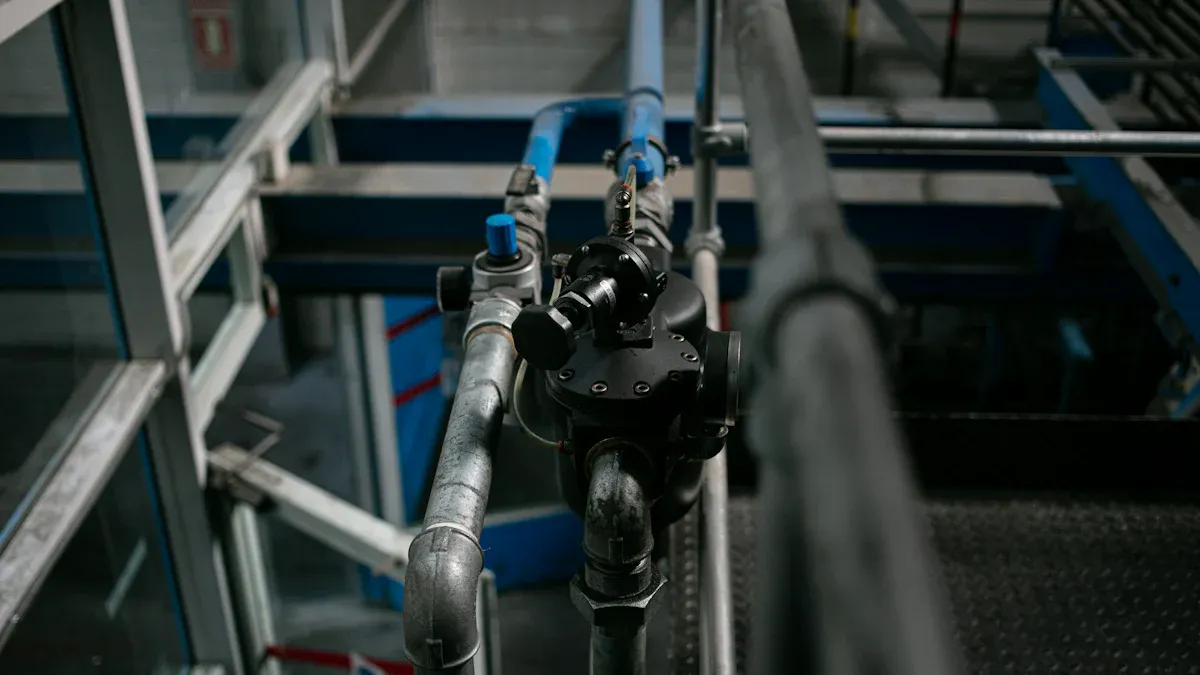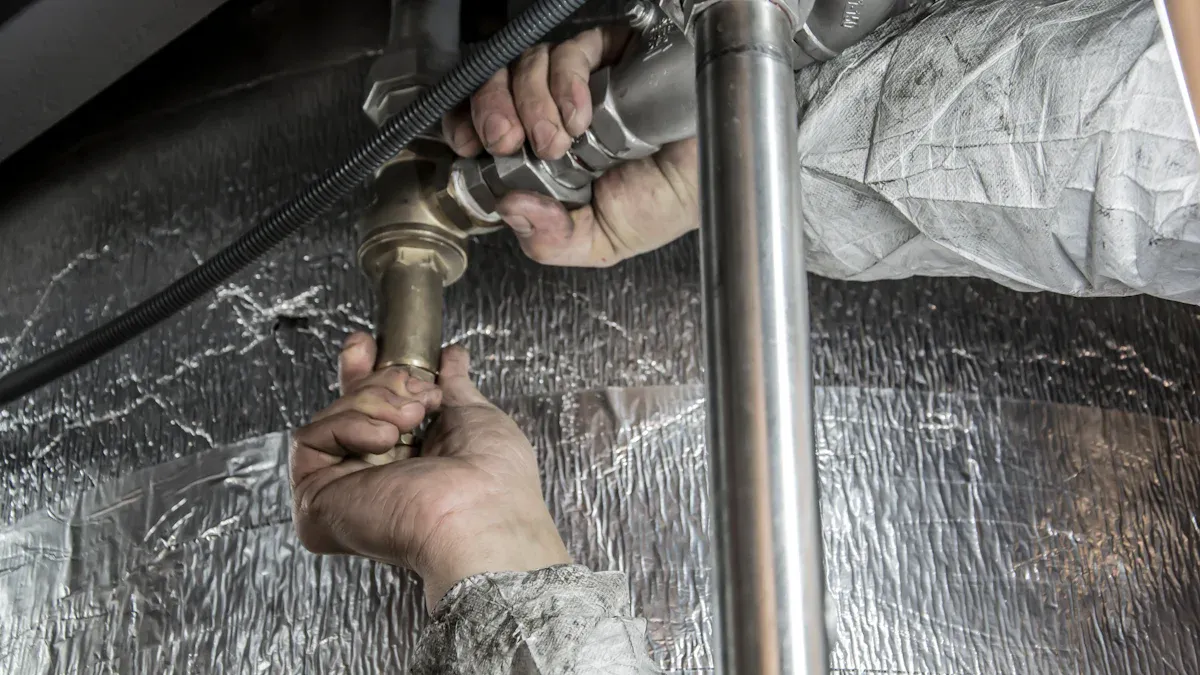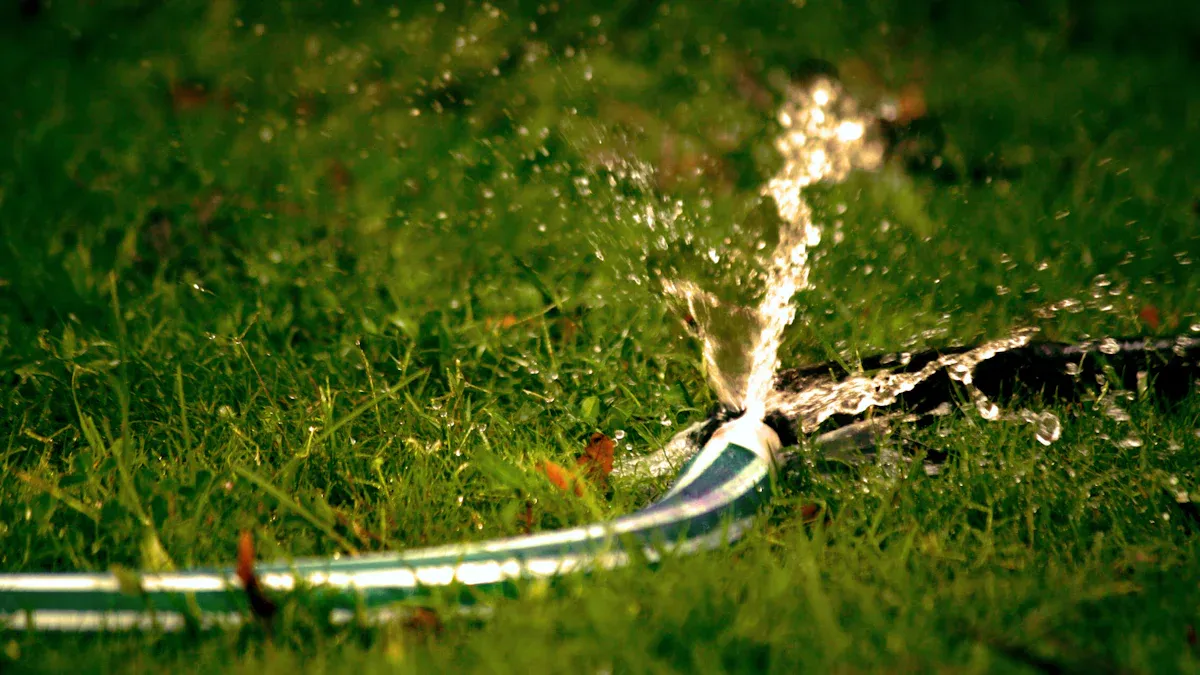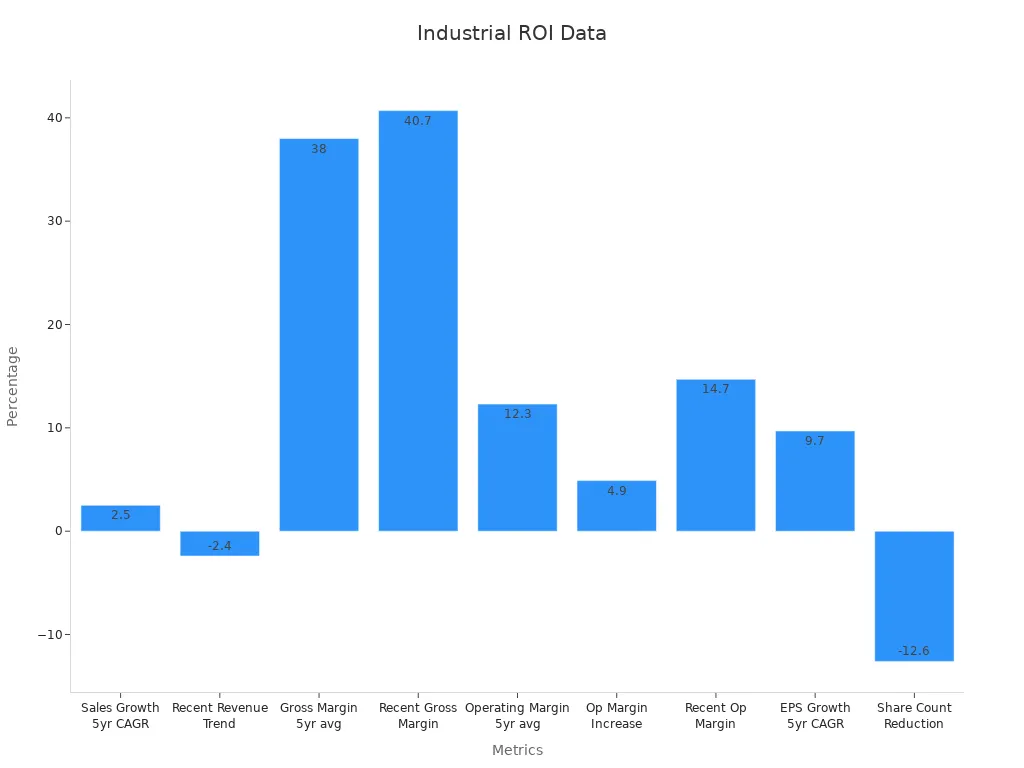
Industrial sites often rely on hose fittings to keep machines running smoothly. Just one faulty hose coupling can lead to leaks, big repair bills, or even safety risks. The table below shows how downtime from poor fittings, like brass fittings or stainless steel pipe fittings, quickly adds up for businesses:
| Industry | Downtime Cost per Hour | Monthly Cost Impact (USD) |
|---|---|---|
| Forestry | $1,200 | $12,000 – $18,000 |
Key Takeaways
- Choose the right hose fittings by considering size, pressure, material, and application to prevent leaks and save money.
- Use high-quality fittings and follow safety standards to protect workers and equipment from accidents and costly downtime.
- Regularly inspect and maintain hose fittings to improve machine reliability, reduce repairs, and keep operations running smoothly.
Hose Fittings for Leak Prevention, Safety, and Efficiency

Preventing Fluid Loss and System Leaks
Fluid leaks can cause big problems in any industrial setting. When a system loses fluid, machines stop working right away. This can lead to wasted materials, lost time, and even damage to equipment. Many leaks happen because of poor installation, worn-out parts, or the wrong choice of hose fittings. Technical studies show that following the manufacturer’s instructions and picking the right fittings for each job helps prevent leaks. Regular maintenance also keeps everything running smoothly.
Experts recommend using the STAMPED method when choosing hose fittings. This means looking at Size, Temperature, Application, Media, Pressure, Ends, and Delivery. Each factor matters. For example, a fitting that works well with oil might not handle chemicals or high pressure. Using the wrong fitting can cause leaks, which waste millions of gallons of fluid every year. Good fittings, installed the right way, keep systems tight and prevent costly spills.
Tip: Always check the pressure rating and material compatibility before installing new hose fittings. This simple step can save time and money.
Enhancing Safety for Personnel and Equipment
Safety comes first in any workplace. High-quality hose fittings help protect workers and machines from accidents. When a fitting fails, it can spray hot or dangerous fluids. This puts people at risk and can damage expensive equipment. Companies that train their employees to pick and install the right fittings see fewer accidents. Workers also use personal protective equipment (PPE) during installation and repairs to stay safe.
- Regular inspections catch worn or damaged fittings before they fail.
- Following industry standards, like ISO 7241 and OSHA rules, ensures fittings meet strict safety guidelines.
- Certified fittings and routine safety checks keep everything in top shape.
New technology makes hose fittings even safer. Some fittings now have sensors that watch pressure and flow. These sensors warn workers if something goes wrong, so they can fix problems before accidents happen. Protective accessories, like hose sleeves and guards, also help. They shield hoses from cuts, chemicals, and bursts, keeping both people and machines safe.
Improving Operational Efficiency and Reducing Downtime
Downtime costs money. Every minute a machine sits idle, the company loses productivity. Quality hose fittings play a big role in keeping operations running. When fittings fit right and hold tight, machines work longer without problems. Studies show that using advanced fittings, like PPSU types, improves reliability in tough conditions. For example, these fittings work well in freezing temperatures and resist corrosion, which means less maintenance and fewer breakdowns.
- Push-lock hose fittings make assembly quick and easy, saving time during repairs.
- Traditional fittings offer strong, secure connections for high-pressure jobs.
- Choosing the right type for each task helps balance cost and performance.
Accurate measurement and proper crimping also matter. If a fitting is not crimped right, it can blow off and cause leaks. This leads to shutdowns and expensive repairs. Regular inspections and maintenance help spot problems early. Companies that follow a schedule for checking and replacing fittings see less downtime and save money in the long run.
Note: Keeping detailed records of inspections and repairs helps spot trends and plan maintenance before problems get worse.
Hose Fittings for Durability, Compatibility, and Compliance

Ensuring Long-Term Durability and Material Selection
Durability matters most when it comes to industrial hose fittings. Workers in factories, construction, and mining need parts that last through tough jobs. Premium hose fittings stand out because they use top-grade materials and go through strict testing. These fittings resist abrasion, pressure changes, and harsh weather. Reliable suppliers back up their products with certifications and test reports, showing that their fittings can handle years of heavy use.
Material choice makes a big difference. Metals like aluminum, brass, steel, and stainless steel each offer unique strengths. For example, stainless steel resists rust and handles high heat, while brass is strong and easy to machine. Some jobs call for plastics like fluororesin or PVC, which work well with certain chemicals and temperatures. Advances in material science have led to new alloys and composites that last even longer and stand up to extreme conditions.
Tip: Always match the fitting material to the fluid and environment. This helps prevent leaks, corrosion, and early failure.
Testing proves how tough these fittings are. Labs measure things like tensile strength, abrasion resistance, and how well the material holds up after chemical exposure. For example, ASTM and SAE tests check for mass loss, wear rate, and changes in hardness. These tests show that quality hose fittings keep their strength and flexibility, even after long use in rough environments.
Achieving Compatibility and Secure Connections
Compatibility means more than just making sure parts fit together. It ensures that hose fittings create a tight, leak-free seal every time. Workers choose between reusable and permanent fittings, each with its own benefits. Permanent, crimped fittings give the strongest hold and need less maintenance. Reusable fittings are easier to install and replace, but they need regular checks to keep the seal tight.
Thread size, type, and orientation all matter. Different standards like metric, BSP, or JIC threads affect how well fittings connect. Using the wrong type can lead to leaks or even damage. Some fittings, like O-Ring Face Seal (ORFS) and Flare fittings, are designed for high-pressure jobs and offer extra security. ORFS fittings, for example, use special O-rings to stop leaks and work well in tough industries like oil and gas.
| Fitting Type | Strengths | Best Use |
|---|---|---|
| Crimped | Strong, secure, low maintenance | Permanent connections |
| Reusable | Easy to install, replaceable | Temporary or field repairs |
| ORFS | Leak-free, high pressure, corrosion resistant | Harsh environments |
| Flare | Durable, corrosion resistant | High-pressure systems |
Regular inspections help spot wear or leaks early. Workers use the right tools and follow manufacturer guidelines to make sure every connection stays safe and secure.
Meeting Industry Standards and Regulatory Requirements
Industrial hose fittings must meet strict standards to keep workers and equipment safe. Certifications from groups like ASTM, ISO, SAE, and ASME show that a fitting has passed tough tests for strength, pressure, and safety. For example, ISO 18752 and SAE standards set rules for pressure ratings, temperature ranges, and material quality. Fittings that meet these standards often perform better and last longer.
| Standard/Specification | What It Covers |
|---|---|
| ASTM A312/A312M | Stainless steel pipes |
| ASME B16.18/B16.22 | Copper alloy fittings |
| ISO 18752 | Pressure and performance classes |
| SAE J1273 | Installation and compatibility guidelines |
Quality hose fittings also follow rules for cleanliness, vibration resistance, and proper installation. Some industries, like pharmaceuticals or food processing, have extra requirements for sanitation and material purity. Companies that use certified fittings can trust that their systems will run safely and meet legal requirements.
Note: Always check for certifications and compliance documents before buying hose fittings. This protects your business and keeps everyone safe.
Investing in quality hose fittings pays off. Companies see fewer leaks, safer workplaces, and better uptime.

Premium fittings cut downtime by up to 35% and help businesses stay strong, even as equipment ages. Choosing trusted suppliers means lower costs over time and steady operations.
FAQ
What makes a hose fitting “high quality”?
A high-quality hose fitting uses strong materials, fits tightly, and passes safety tests. It lasts longer and helps prevent leaks or accidents.
How often should workers inspect hose fittings?
Workers should check hose fittings during regular maintenance or if they see leaks. Many companies inspect fittings every month to catch problems early.
Can workers reuse hose fittings?
Some hose fittings are reusable. Workers can use them again if they look good and pass inspection. Always follow the manufacturer’s advice for safety.
Post time: Jun-30-2025
